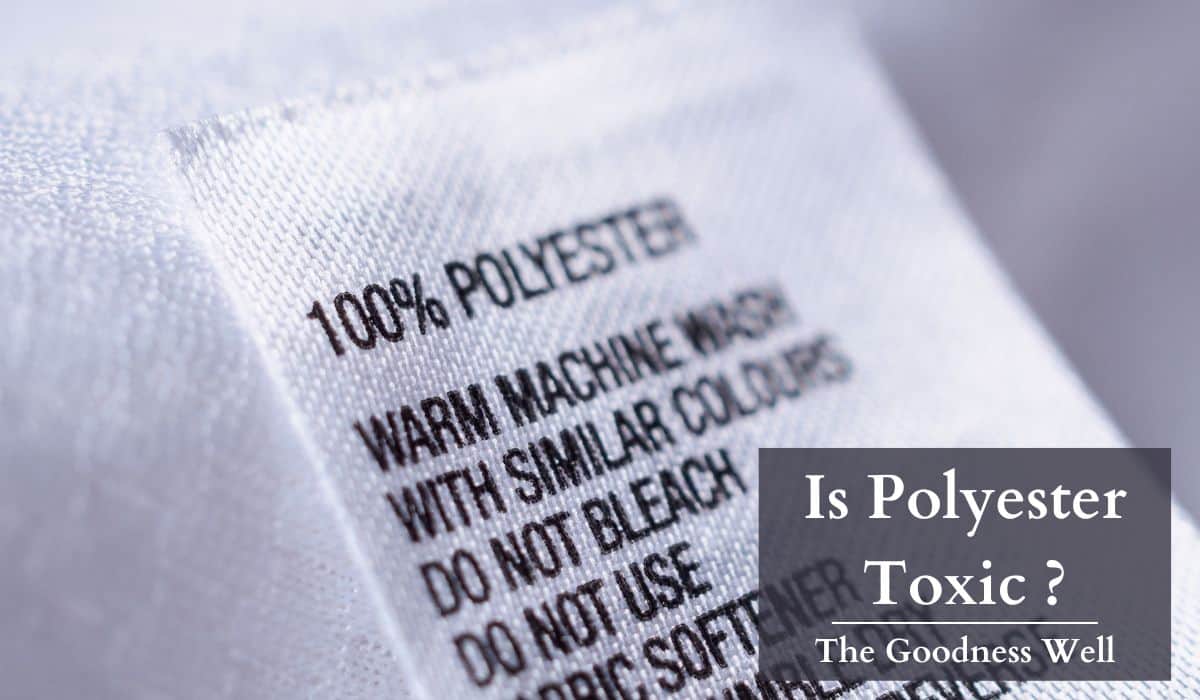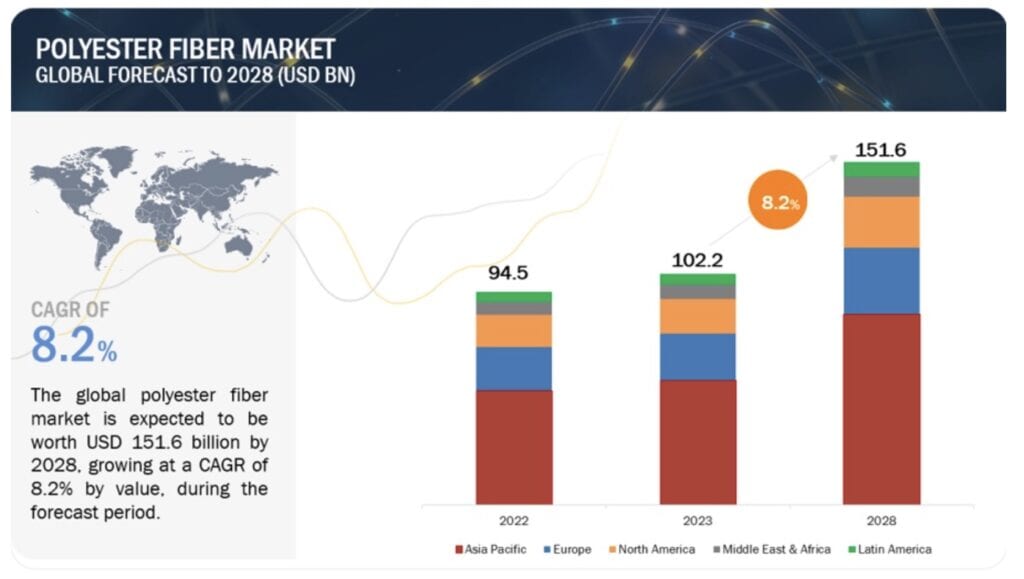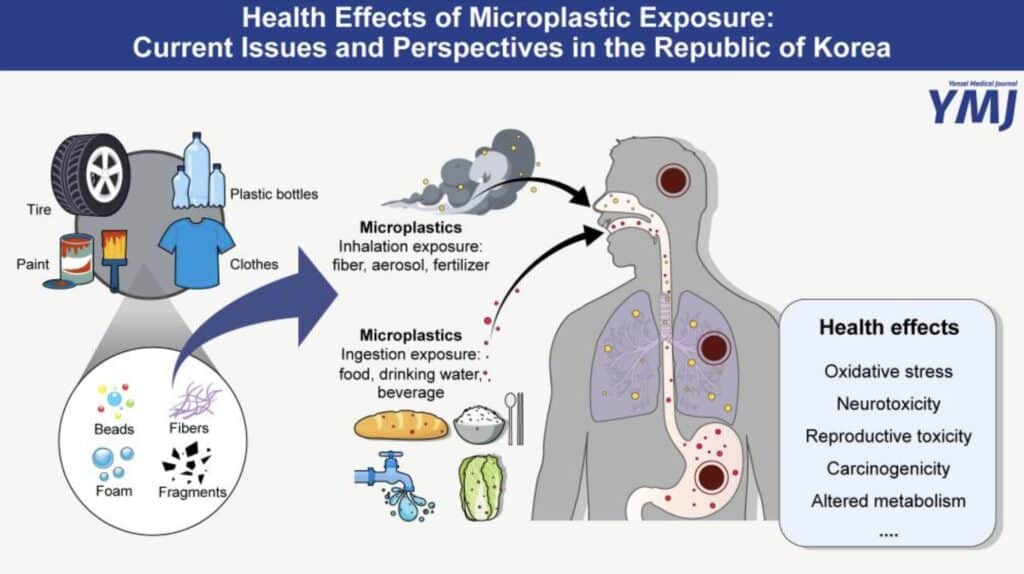Is Polyester Toxic? Exposing Fashion’s Favorite Material

Is polyester toxic? Let’s talk about this issue that has woven its way into our lives, literally.
This is a bigger topic than you might think, as you probably sleep on this material at night and wear it during the day.
We’re gonna talk about if and how this fabric is toxic, its effect on our health, and the environment, and what you can do about it.
All right, let’s unravel this issue thread by thread. (ba dum, tsss).
TL;DR
The production of polyester, a common synthetic fabric derived from petroleum, involves toxic chemicals and synthetic dyes, which largely contribute to air and water pollution, as well as global warming. Also, washing polyester clothing releases microfibers into the water system, which are linked to chronic inflammation in humans and potential hormone and fertility disruptions, as shown in animal studies. These microfibers also pose a severe threat to aquatic life and ecosystems, leading to digestive blockages and widespread habitat pollution. We suggest choosing more sustainable and health-friendly fabric alternatives such as cotton, linen, hemp, bamboo, Tencel, and ethically sourced wool.
What is Polyester?
Polyester, in simple terms, is a type of synthetic, plastic fabric derived from petroleum. Yes, you heard it right – the same stuff that fuels our cars.
Other types of synthetic polymers you’ve probably heard of include nylon, polyethylene, Teflon, and epoxy.
We all know how useful it is. It’s durable, wrinkle-resistant, and dries pretty quickly.
It’s become a staple in our wardrobes and homes, and I bet you’re within arm’s reach of something made from it right now (shirts, pants, curtains, blankets, sheets, pillowcases, couch cushions).
How is It Made?
So how does oil turn into your favorite yoga pants or shirt?
It’s a chemical process that involves heating petroleum, air, and water under intense pressure to create something called “polyethylene terephthalate,” or PET.
The PET is then spun into fibers that are woven into fabric – voila, polyester!
So that’s how it’s made but take a look at how much is made (spoiler alert, it’s a lot)!
How Much is Being Made?
Here’s a glance at just how much is made worldwide.
Production of Polyester Worldwide: 1975 to 2021 (in million metric tons)

Yes, it’s a massive amount. And if you think those blue bars are growing every year, you’re correct.
Here is the projected growth for polyester up to 2028:

As you can see, a lot is being produced, and it’s causing polyester and its microfibers to be found everywhere.
But is this concerning?
YES.
Let’s talk about why.
Is Polyester Toxic?
Yes, polyester is toxic due to its energy-intensive production and the adverse effects its microplastics have on the health of humans and the environment.
Let’s dive into that statement a little further and break it down.
Health Concerns
Research on microplastics and their effect on our health is still in its early days, but we do know a few things so far.
Those tiny microfibers (MFs) can have different effects on our bodies as depicted below.

The problem with microfibers, like other toxins such as industrial chemicals and pollution, is that they can contribute to widespread inflammation.
Inflammation is already a problem among many people due to lifestyle choices like poor diet, high BMI, stress, alcohol use, and smoking.
This chronic inflammation can potentially lead to conditions like asthma, cancer, heart disease, and diabetes.
And it’s not just the microfibers in polyester, but other aspects of its production that are toxic as well:
- Synthetic Dyes: Synthetic Dyes applied to polyester are linked to allergies and even cancer
- Other Harmful Chemicals: More than 15,000 chemicals can be used in its production such as harmful ones like flame retardants and endocrine disruptors.
- Release of Pollutants: Its production releases pollutants like heavy metals into the air
Does Polyester Cause Cancer?
Current research doesn’t indicate that polyester causes cancer. While long-term, daily exposure to microfibers, synthetic dyes, and petrochemicals is associated with a higher incidence of lung cancer, you probably aren’t exposed to high levels of these daily.

According to this NIH article though, components of the synthetic dyes applied to polyester are linked to cancer and allergies.
So depending on your amount of exposure, it could potentially influence your risk of developing cancer, but this risk is small unless you are a textile factory worker.
Effects on Hormones
While there haven’t been studies on humans, there are a couple of studies on dogs showing how polyester causes hormone and fertility changes.
Like this one, which showed how female dogs wearing polyester underpants had decreased progesterone levels and failed to conceive.
However, once the fabric was removed, their progesterone levels normalized, and they were able to conceive.
Another study on male dogs found that the dogs’ hormone levels remained stable, but polyester did affect their sperm health, reducing sperm count, and mobility, and increasing sperm abnormalities.
Most dogs regained normal sperm quality after removing the polyester.
In contrast, cotton caused no sperm health changes.
It’s important to note that this study was conducted on dogs, and the effects might differ in humans.
Polyester and its microfibers can contribute to inflammation. The dyes and other chemicals involved in its production have also been linked to cancer and endocrine disruption but the risk can vary on the amount of exposure. Also, studies on dogs show polyester can cause hormone and fertility changes, but it’s not understood if this is true for humans.
Effect on Wildlife
This toxic fabric isn’t just harmful to us, but to animals as well.
- Aquatic Food Chain: Those tiny, indigestible microfibers end up in water systems. Aquatic life often confuses these particles for food, leading to digestive blockages, malnutrition, and sometimes death.
- Entanglement and Direct Ingestion: Polyester items, like netting and lines, can entangle or be ingested by animals, leading to injury, impaired movement, or death.
- Habitat Pollution: Its production pollutes soil and water, causing harm to habitats, and introducing toxins into their environment.
And as you probably figured, the effects synthetic fabrics have on the environment aren’t great either.
Environmental Effects
The production of fast fashion is far from sustainable.
How so, you ask? Here are some points to consider:
- Extraction of non-renewable crude oil for synthetic fabric production disrupts the surrounding ecosystem.
- Refining processes release harmful toxins that contribute to air pollution and global warming.
- Oil spills during extraction disrupt the environment, soil fertility, wildlife, and fishing activities, impacting the livelihoods of local populations.
- Spills result in high levels of heavy metals like chromium, lead, and arsenic in food, posing serious health risks.
Also, every time we wash synthetic fabrics like polyester, very tiny pieces of plastic (microfibers) wash down the drain.
These microplastic pieces are so tiny that water treatment centers don’t filter them all, so they end up in lakes, rivers, and even the ocean.
The dyeing and finishing processes in the textile industry, including polyester, are accountable for a staggering 20% of worldwide water pollution.
20%!!
Almost everything having to do with the production of synthetic textiles leaves a HUGE carbon footprint.

From the manufacturing and use of fossil fuels to the transportation, fast fashion just isn’t worth it for us all in the end.
The age-old thinking of “out of sight, out of mind” is starting to bite us back.
The health effects may not be apparent right now, but if we don’t make changes, it might literally affect your sight and mind one day (okay, not my best pun, but the point still stands).
“But what about if it’s recycled?“
Is Recycled Polyester Toxic?
While recycled polyester does reduce waste and petroleum use, it still causes microfiber pollution and is challenging to recycle. It’s a part of sustainable fashion, but really more like a bandaid for fashion’s environmental crisis.
So, it’s not as toxic, but still not a great solution.
What Can I Use Instead?
I didn’t want to rain on your parade as I know how much you adore your chic polyester shirts.
However, there are plenty of other options better for you, the animals, and the environment. Wearing organic clothing made with the materials below is the healthiest fashion choice you can make.

Here’s a list of the most common alternatives:
- Cotton: Breathable, biodegradable, and comfortable!
- Linen: Derived from the flax plant, linen is durable and breathable.
- Hemp: A resilient, fast-growing crop that gets softer with every wash.
- Bamboo: With rapid growth and minimal water requirements, bamboo is a sustainable source of fabric.
- Tencel: A type of rayon made from sustainably sourced wood pulp.
- Wool: A classic choice for colder weather, just make sure to choose ethically sourced wool.
*again, be sure to choose organic options whenever possible.
Final Thoughts
We and our family grew up in polyester clothing, just like you I’m sure, and while we’re not 100% free from polyester clothing yet, we’re slowly replacing our wardrobe and choosing not to buy any more synthetic clothing materials.
With better options like cotton, hemp, and bamboo out there, we can choose clothes that are good for us and the planet.
Let’s keep it simple and smart in our fashion choices.






